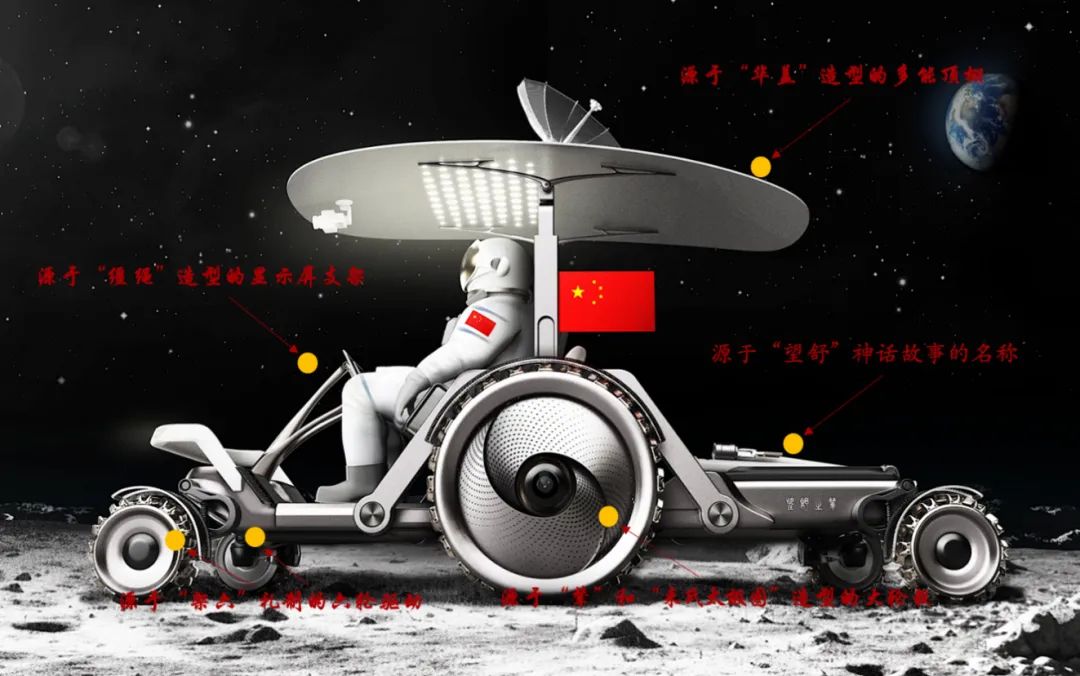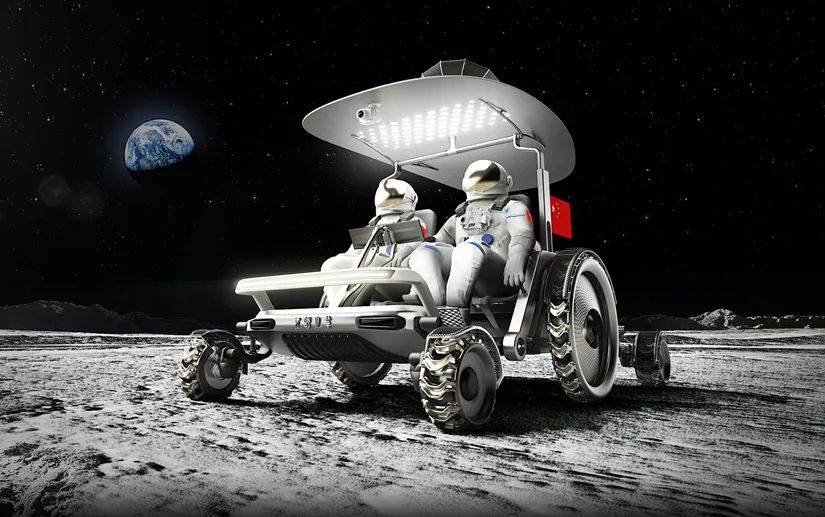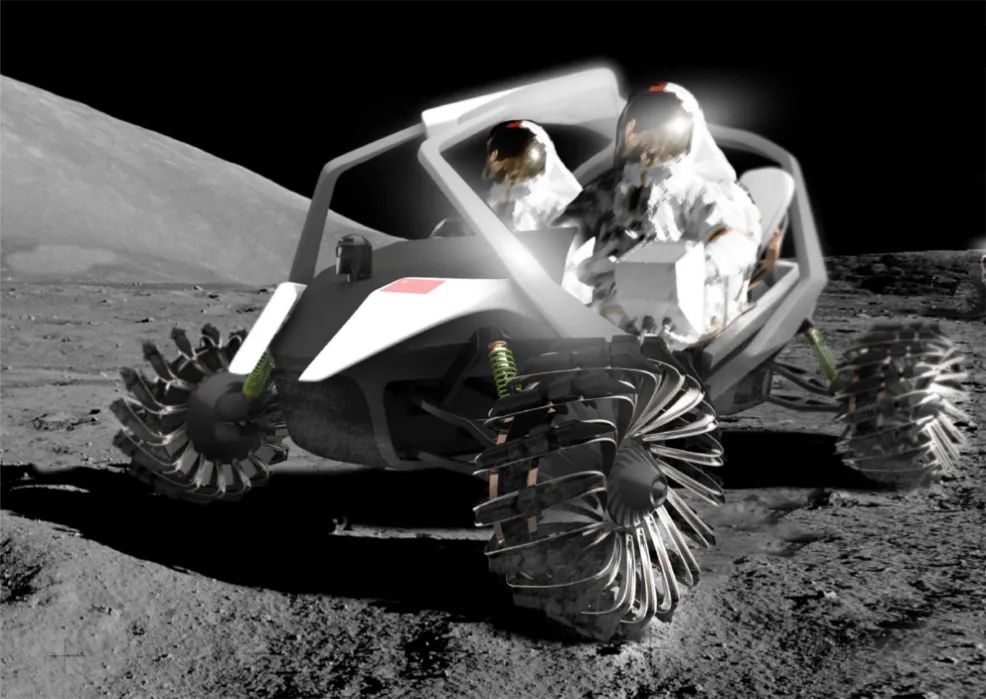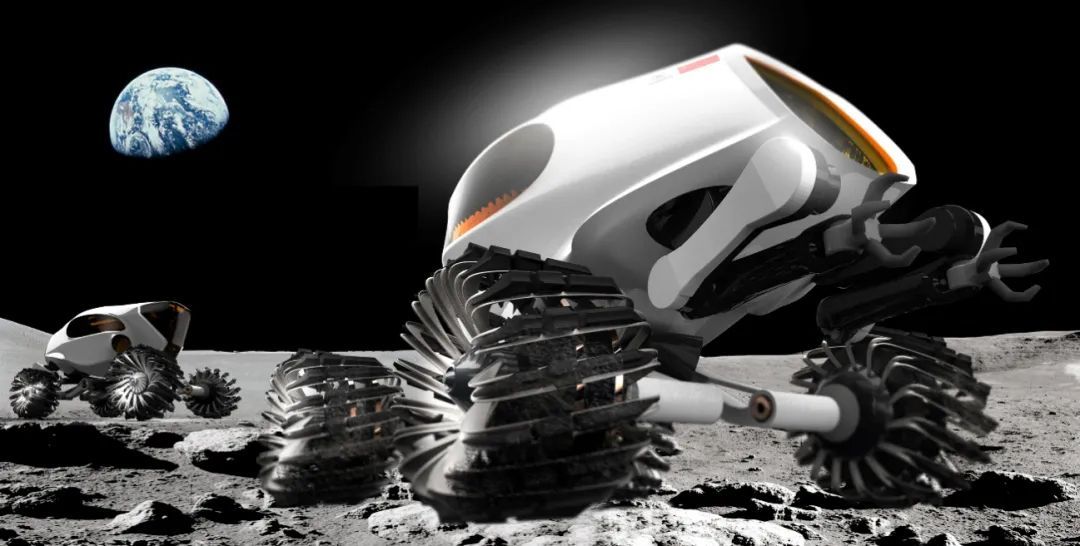Tsinghua University's "Wangshu Chariot," selected as one of the prototype designs for CNSA’s lunar rover project, features elevated seats, solar canopy, and foldable design. It includes hybrid driving tech & a unique joystick, adaptable for Earth vehicles..
The design team also developed the man-machine intelligent hybrid enhanced driving technology for the manned lunar rover, realizing three modes of manual driving, autonomous driving and human-machine hybrid driving, which not only provides astronauts with driving pleasure, but also provides safe driving and special needs. Provides guarantee for autonomous return to the lunar lander under certain circumstances.
This technology can also be transplanted to the driving of ground vehicles to better integrate human control and autonomous driving. In addition, in order to solve the problem of limited wrist and finger movement caused by astronauts wearing lunar spacesuits, and to improve the reliability of driving, specially designed operations can decouple the forward, backward, steering and braking movements in terms of hand feel. joystick, and gives the joystick mouse function. To ensure reliability, the joystick was moved to the middle position between the two astronauts so that the astronauts could hand over control functions at any time. Similarly, this technology can also be transplanted to ground vehicles to realize co-driving of the driver and auxiliary driver..




Link -
The design team also developed the man-machine intelligent hybrid enhanced driving technology for the manned lunar rover, realizing three modes of manual driving, autonomous driving and human-machine hybrid driving, which not only provides astronauts with driving pleasure, but also provides safe driving and special needs. Provides guarantee for autonomous return to the lunar lander under certain circumstances.
This technology can also be transplanted to the driving of ground vehicles to better integrate human control and autonomous driving. In addition, in order to solve the problem of limited wrist and finger movement caused by astronauts wearing lunar spacesuits, and to improve the reliability of driving, specially designed operations can decouple the forward, backward, steering and braking movements in terms of hand feel. joystick, and gives the joystick mouse function. To ensure reliability, the joystick was moved to the middle position between the two astronauts so that the astronauts could hand over control functions at any time. Similarly, this technology can also be transplanted to ground vehicles to realize co-driving of the driver and auxiliary driver..




Link -











